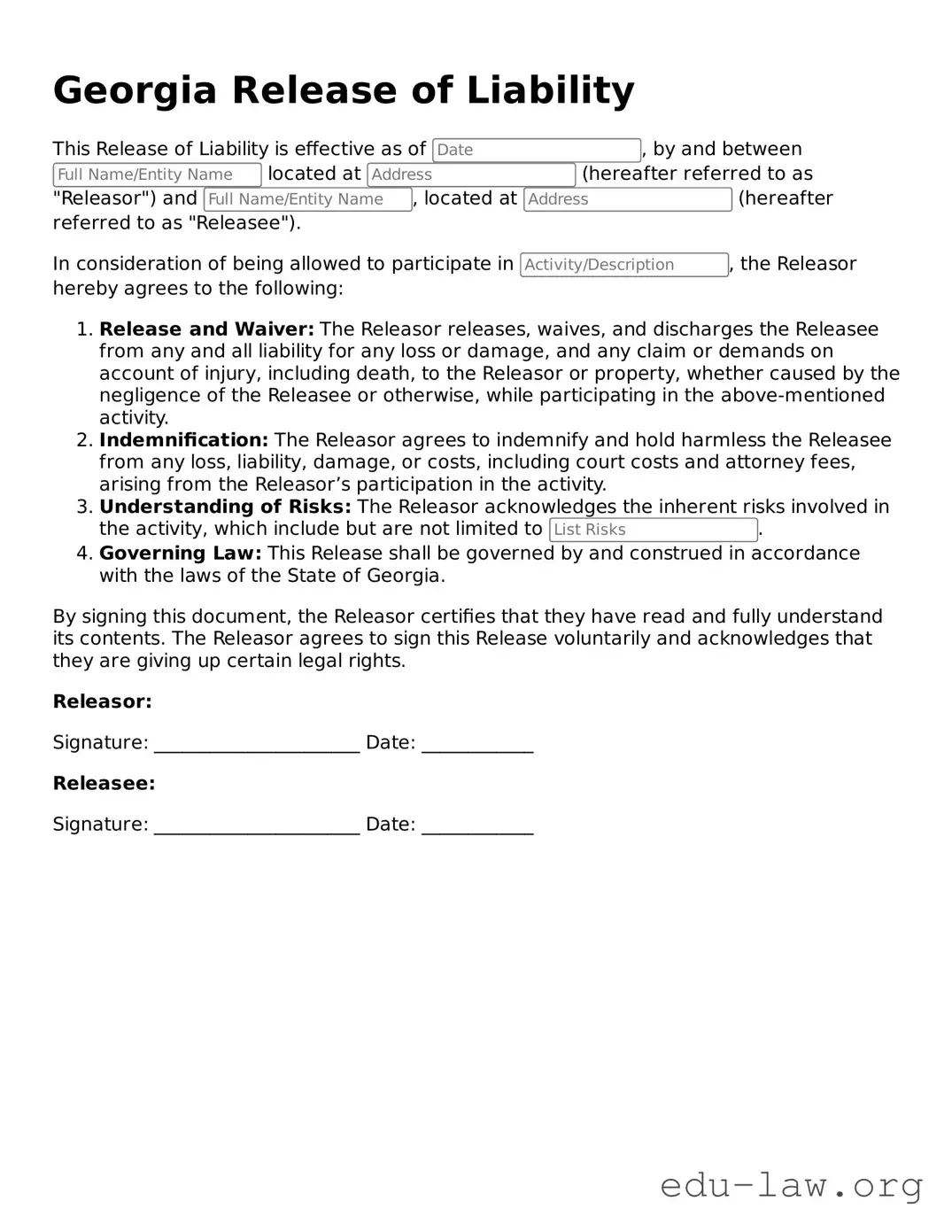What is a Georgia Release of Liability form?
The Georgia Release of Liability form is a legal document that protects one party from being held liable for injuries, damages, or losses that another party may incur while participating in specific activities. It helps clarify that the participant understands the risks involved and agrees not to sue if something goes wrong.
When should I use a Release of Liability form in Georgia?
You should consider using a Release of Liability form anytime you are hosting an event or activity that involves physical risks. This could include activities such as sports, recreational events, or any situation where injury could occur. It helps to ensure that participants acknowledge the potential risks before taking part.
Is a Release of Liability form enforceable in Georgia?
Yes, a properly drafted and signed Release of Liability form is generally enforceable in Georgia, provided that it meets state requirements. However, it’s important to note that certain limitations may apply, especially in cases of gross negligence or willful misconduct. Always consider consulting with a legal professional for personalized advice.
Who should sign the Release of Liability form?
Ideally, everyone participating in the activity should sign the form. If minors are involved, a parent or legal guardian must sign on their behalf. By having all participants sign, you enhance the protection against potential liability claims.
What are the critical elements of a Release of Liability form?
A comprehensive Release of Liability form should include the name of the activity, a clear acknowledgment of the risks involved, the date of the event, and a statement of release from liability. Additionally, the form should have spaces for the participants' names, signatures, and contact information, ensuring complete documentation.
Can I modify a Release of Liability form?
Yes, you can modify a Release of Liability form to suit your specific needs. However, these modifications should be made carefully. It’s essential that any changes do not violate state laws or reduce the effectiveness of the release. Consulting with a legal expert before making changes is advisable.
What happens if someone gets injured despite signing the Release of Liability?
If someone gets injured after signing the form, the release may still protect you from liability, depending on the circumstances. The injured party’s understanding of the risks and the specific language of the release will be critical. Courts may evaluate these factors when determining enforceability.
Where can I find a Georgia Release of Liability form?
You can find templates for a Georgia Release of Liability form through numerous online legal resources. Many websites provide customizable forms that comply with state laws. It’s crucial to ensure that the form you choose aligns with Georgia law and meets your specific circumstances.
